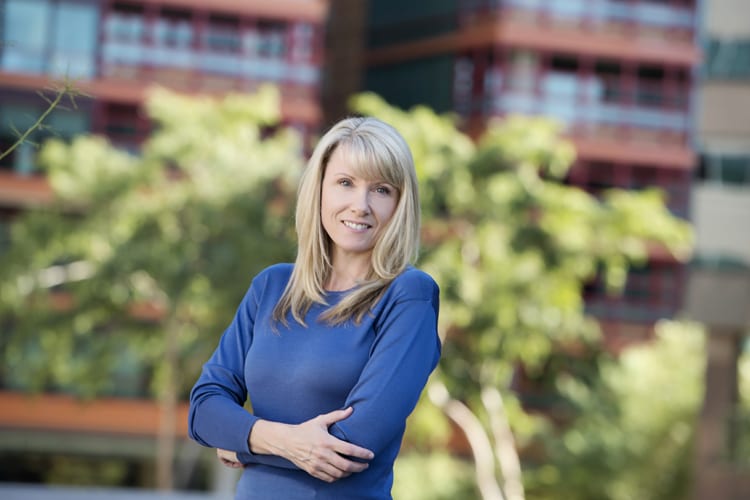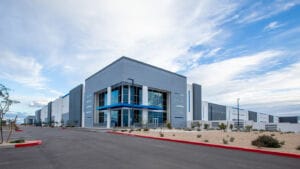We are in the second longest economic expansion in US history and, according to Economist Elliott Pollack, expansion is expected to continue, albeit at a slower pace in 2019.
At the Annual 2019 IREM/CCIM Forecast, held on January 24th, Elliott Pollack and a host of panelists gathered together to discuss the state of the economy here in Phoenix, including what is driving growth and if the trend will continue.
We are in the second longest period of recovery and Pollack indicates that we are in the 8th inning. As the period of recovery gets longer; however, there are susceptibilities that can trigger recession. While that term brings the potential for angst and discomfort, Pollack reminds us that not all recessions are created equal. The most recent recession of 2007 to 2009 was a “once-in-an-80-year experience” and is unlikely to occur again in our lifetimes. The credit crisis caused by the bursting housing bubble helped to create this significant market correction. However, most recession periods last eight to 11 months and are mild. The good news is that with no significant imbalance in need of correction, when it does happen, indicators point to a mild recession.
The primary concern with the economy is the labor shortage. Currently, there are seven million unfilled jobs throughout the US, nearly the highest in recorded history. With this shortage comes increased wages and pressure on inflation. The Federal Reserve will continue to watch this and make adjustments as necessary in order to stave off a recession.
What is on the horizon for Arizona?
Arizona is sixth in the nation for job growth with 87% of that growth focused on the Phoenix Metro Market. People vote with their feet: 7% of all people moving throughout the US choose Arizona for relocation, making Phoenix the second fastest growing city in the west behind Seattle. Strong economic drivers including tremendous infrastructure, clean and uninterrupted power supply, land availability and affordability and no natural disasters make Phoenix appealing. Pollack indicated that 67,000 jobs were added to the State in 2018 and that he expects 60,000 new jobs in 2019. The sectors with the highest job growth are Construction, Education and Health Services, Professional Business Services, Leisure and Hospitality, and Manufacturing. Construction and Manufacturing are currently the leading drivers of job growth, which bring with them the support service industries.
Industrial
For the industrial sector, look to big box growth in the southwest valley around Goodyear with large data centers. The south central valley around the airport and the southeast valley rely heavily on a strong employment sector and attract users ranging from 50,000 to 250,000 SF for manufacturing.
Industrial development has been restrained over the last three or four years, generally leading to controlled growth and low vacancy.
The completion of the new Loop 202 freeway will have a significant impact on both the southwest and southeast valley by creating better access for the skilled workforce to more easily traverse the two markets.
Office
The office sector is enjoying significant growth in supply and rates, particularly along the freeway arterials of the southeast valley. In 2013, office vacancy hovered at 25%; now, we are seeing overall vacancy at 12.5%. In addition to the 300 days of sunshine, average temperatures of 75 degrees and an average commute time of 26 minutes, local government incentives are also helping to attract national firms. This has led to a diversity of industries in the area. Phoenix has had a strong history of jobs in Construction and Leisure and Hospitality, but over the last few years, there has been an influx of white-collar industries including finance, insurance, defense, bioscience, biomedical, and engineering.
Affordability is a significant consideration for growth, both in terms of commercial rents as well as housing. The average home price in Phoenix is $263,000. In neighboring Los Angeles County, the average home price is $625,000 and in San Francisco, it is $1,600,000. Housing affordability and the impact on cost of living are significant drivers into the Phoenix market.
With the strength of the local economy, job growth and the influx of residents to the state, healthcare demands continue to increase, creating a need for additional providers and points of delivery. The current reimbursement model for hospitals and providers has afforded expansion opportunities. Mayo Clinic announced a $648 million dollar expansion with plans to double the size of their Phoenix campus by 2023. They will bring another 2,000 jobs into the economy. Several other hospitals are following suit with plans to expand to meet the needs of the increasing demographic.
However, as this sector is vulnerable to legislation that impacts reimbursement for service, there continues to be a drive to low-cost delivery with touch-points at every acuity from the patient’s home to the primary delivery hub: the hospital. This trend is not likely to change.
Retail
Contrary to consumer opinion, brick and mortar retail is still going strong. Retail is never static; trends and shopping habits change, yet successful owners are adept at navigating this every evolving climate. Necessity-based retail or “internet-resistant retail” such as nail salons, gyms, restaurants, and entertainment venues will continue to drive the need for brick and mortar. These are driven by an increasing population and cannot be replaced by e-commerce. “Experience” retail is becoming a more significant segment of the market.
In 2005, developers built 11 million square feet of retail and much of that space sat empty during the recession. Growth is showing restraint now, with less than one million SF per year delivered to the market each year. Developers no longer build on a speculative basis, but instead respond to user needs.
Retailers look at big box closures as an opportunity to backfill the spaces with office users or multifamily housing. Current vacancy is 8.5% for retail or nine million square feet. Of that, three million SF is being removed from the market because it is being backfilled by alternative uses.
Multifamily
Phoenix has strong fundamentals for robust job growth, specifically for jobs in financial services. The largest growing demographic is young people, 20 to 34 years old, who are lured by a steady job market and affordable housing. Phoenix is the least expensive market in the western US, excluding Las Vegas.
Demand is outpacing supply. Local household formation is expected to be between 47,000 to 48,000 each year through 2026, as projected by CBRE. With new single-family home deliveries of 22,000 units and multifamily at 8,000 units last year, the household demand is exceeding the annual supply, which is leading to a decline in vacancy and strong rent growth.
In years prior, infill locations around Central Phoenix and South Scottsdale have taken center stage; however, with the uptick of construction costs, it is getting more difficult to deliver those options at reasonable rates. There has been a shift to the outlier markets of Gilbert, Goodyear, and Avondale, where land prices are low enough to deliver affordable multifamily projects.
Conclusion
The theme of the Forecast can be summarized with the following highlights:
• Phoenix is the economical “back-office” alternative to the west coast
• Infrastructure and government incentives will continue to support growth
• The diversity of the industries create a strong and synergistic economy
• While a recession appears to be on the horizon, it is anticipated to be minor in terms of length and impact
Participants in the local real estate market have indicated that while we may be in the eighth inning, this is likely a double-header with plenty of play left in the game.
Marina Hammersmith, CCIM, is the senior vice president of healthcare brokerage services for Ensemble Real Estate Solutions.




